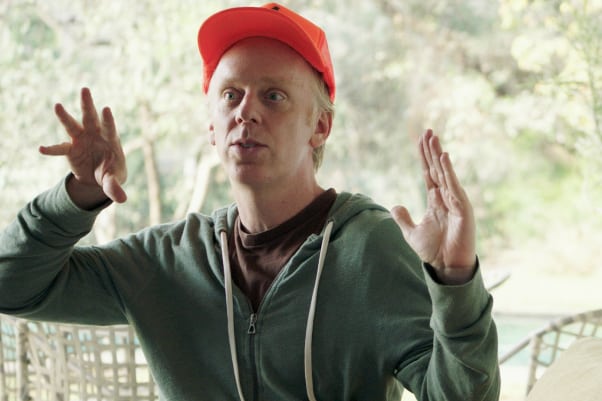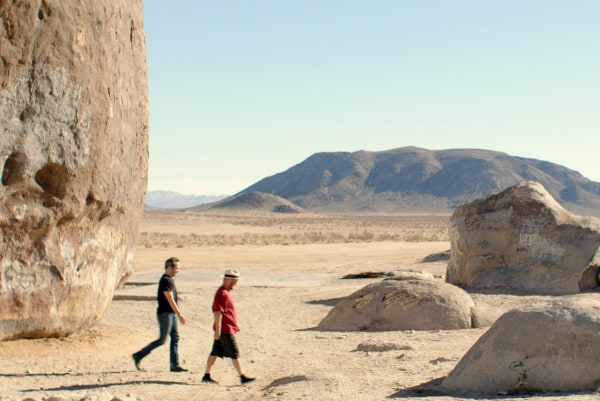
Written by Pierre Bismuth, D.V. DeVincentis & Anthony Peckham
Directed by Pierre Bismuth
USA, 2016
Hollywood is not just a place, Hollywood is a verb
You can Hollywood something
You can Hollywood anything-Ed Ruscha
Where is Rocky II? is a difficult film to categorize (that’s a good thing). Writer/director Pierre Bismuth (Eternal Sunshine of the Spotless Mind) weaves documentary filmmaking together with a fictionalized narrative and forms an engaging cinematic hybrid. Where is Rocky II? won’t be every documentary lover’s cup of tea, however, those enticed by cinema that strays outside the box, need look no further.
Back in the 70’s, renowned American artist, pop culture icon, and all around cool dude, Edward Ruscha, secretly crafted a piece of pop art named Rocky II and hid it out in the Mojave Desert. Moreover, Rocky II is a replica boulder, built to blend in with the surrounding landscape. After Bismuth gets Ruscha to cop to Rocky II’s existence during a press conference, the hunt is on. Bismuth hires former homicide detective and current Wilford Brimley doppelganger, Michael Scott, to track down Rocky II. In a unique twist, Bismuth also brings in a pair of screenwriters (D.V. DeVincentis and Anthony Peckham) who dramatically recreate Scott’s sprawling investigation. On top of all that, there is a third layer to the film. The screenwriters create a fictionalized version of Scott’s tale, which is told as a movie within a movie and features notable actors Robert Knepper and Milo Ventimiglia.
Right from the beginning, viewers will notice Bismuth’s alternative approach to shooting a documentary. Where is Rocky II? is the antithesis of guerrilla-style filmmaking, it has a very slick, well-produced look and top-notch score. The camera glides into each scene, perfectly framing events. When people receive calls, the camera is already in the room, locked on them and in focus as they pick up the phone. If not for the subject’s stilted dialogue and lack of charisma (which is part of the film’s charm), one would think they were watching a scripted drama.
Where is Rocky II? is all about drawing the viewer’s attention to how artistic liberties go hand in hand with adapting stories. There is nothing exciting or glamorous about Scott’s meticulous approach to tracking down Rocky II. Scott consults phone books, calls up old contacts on the phone, and resorts to tracking people down on Google Street View. Even when Scott questions his leads, the conversations are dry and unremarkable. Most of Scott’s investigation is mundane, definitely not material compelling enough for an audience to sit and enjoy — which is exactly Bismuth’s point.
The film hits its stride once Bismuth juxtaposes Scott’s slow, measured investigation with the screenwriter’s bombastic interpretation of events. DeVincentis and Peckham’s version plays fast and loose with the facts. These moments burst into the film like video game cut-scenes, littered with bullets, foul language, and explosions. Just to top things off, Knepper and Ventimiglia really chew the scenery, drawing attention to how untethered their movie is from reality. We all know that screenwriters “Hollywood things up,” but watching the process unfold is still mind-boggling: Scott’s story undergoes “Hollywoodification” right before our eyes.
There aren’t many films out there like Where is Ricky II? Bismuth ties the film’s three narratives together into one cohesive piece of meta-storytelling. The film works on multiple levels; cinephiles will appreciate Bismuth’s brilliant craftsmanship and his deconstruction of Hollywood chicanery, while others will be drawn into the mystery at the center of the movie. Where is Rocky II? is a bizarre, surreal, and enjoyable look at how off the mark art can be when imitating life.



